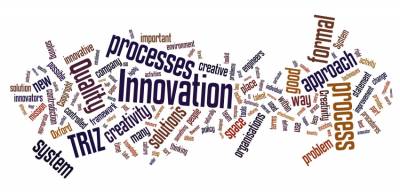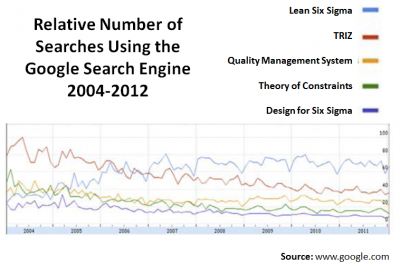Exploration and discussion concerning improvement and innovation in today's organizations.
In today’s highly competitive and global economy both 'improvement' and 'innovation' are essential for businesses to remain competitive. Generally, improvement aims for high and sustainable performance in existing business areas through continual and incremental gains, while innovation aims for breakthrough resulting in stepwise gains. In the past they were seen as mutually dependent and approached through the various 'silo' functional areas of organizations. Through benchmarking of best practices in use today there is strong evidence to support integrating improvement and innovation to achieve a coherent and powerful approach to sustainable business practices. Look for upcoming post to explore the dilemmas often faced in pursuing improvement and innovation concurrently and to sharing the benefits of successfully integrating them together.
Using Creative Tension to Integrate Improvement & Innivation
- Font size: Larger Smaller
- Hits: 13101
- 0 Comments
- Subscribe to this entry
- Bookmark
Using Creative Tension to Integrate Improvement and Innovation
The Challenge
As an educator and champion for both innovation and improvement, I recognize the tension between improvement and innovation many people express today. Peter Senge’s concept of Creative Tension (Senge, 1994) epitomizes this dilemma.
It involves formulating a coherent picture of the results people most desire to gain as individuals (the vision), alongside a realistic assessment of the current state of their lives today (the current reality).The challenge is to learn to expand our capacity to use improvement and innovation methods interactively when addressing projects and to avoid compartmentalizing them into mutually exclusive groups.
A Possible Solution
My vision is for an integrated set of methods and tools for improvement and innovation that people can use interchangeably for both improvement and innovation projects. The Current Reality is a fragmented set of tools, one for improvement and the other for innovation.
If we can step out of our traditional comfort zones and learn from best practices in use today, we can learn to integrate improvement and innovation practices to create powerful, unparalleled and sustainable business results.
I am not alone in this vision. The following “Word Cloud” shows prominence to words from a recent workshop on integrating improvement and innovation.

Google Search Trends
In a recent TRIZ conference, the Key Note Speaker, Larry Smith, a retired executive from Ford Motor Company, presented some interesting statistics on current trends from Google with respect to searches about improvement and innovation. In essence trends for use of TRIZ have declined in recent years while trends for use of Six Sigma have increased over the same time period.

To see Mr. Smith’s entire presentation go to the Altshuller Institute’s Community of Practice: https://aitriz.org/groupjive
What’s Next?
Integrating improvement and innovation methods into an overall quality system seems like an approach that could eliminate the potential conflict between improvement and innovation methods. To be effective, we will need to manage improvement and innovation within the Quality Systems and use measures for improvement and innovation, as well as audit the use of both for appropriate use of resources.
In future blogs we will explore whether such a formal approach to innovation is possible. Stay tuned.
All the best,
|
Chuck Roe| Academic Program Manager - Quality |
|
|
e. CRoe@Post.edu |
Post University |
Visit our blog @ blog.post.edu
President, Altshuller Institute for TRIZ Studies
Visit our blog @ https://aitriz.org/triz-quality
References
